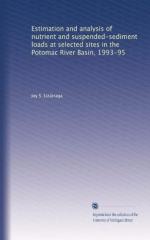|
This section contains 852 words (approx. 3 pages at 300 words per page) |

|
Sediments are loose Earth materials such as sand that accumulate on the land surface, in river and lakebeds, and on the ocean floor. Sediments form by weathering of rock. They then erode from the site of weathering and are transported by wind, water, ice, and mass wasting, all operating under the influence of gravity. Eventually sediment settles out and accumulates after transport; this process is known as deposition. Sedimentation is a general term for the processes of erosion, transport, and deposition. Sedimentology is the study of sediments and sedimentation.
There are three basic types of sediment: rock fragments, or clastic sediments; mineral deposits, or chemical sediments; and rock fragments and organic matter, or organic sediments. Dissolved minerals form by weathering rocks exposed at the earth's surface. Organic matter is derived from the decaying remains of plants and animals.
Clastic and chemical sediments form during weathering of bedrock or...
|
This section contains 852 words (approx. 3 pages at 300 words per page) |

|


